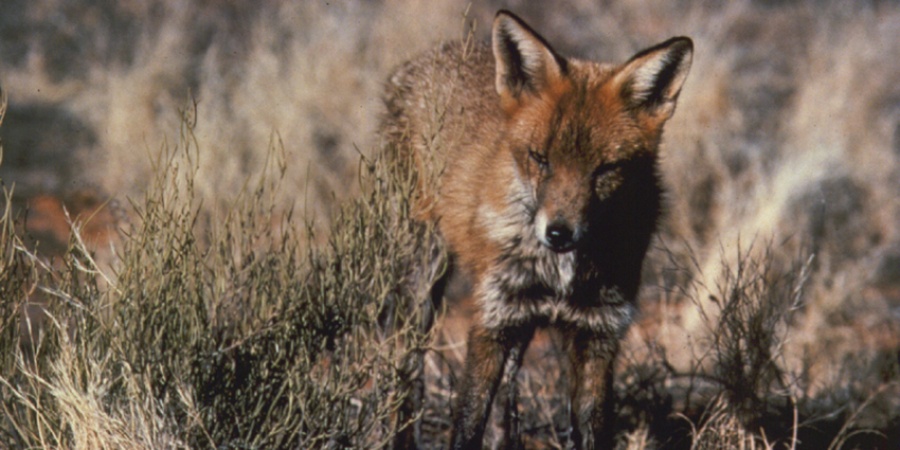
European fox. Photo by Babs and Bert Wells
Scientific name Vulpes vulpes
Status Declared Pest under Biosecurity and Agriculture Management Act 2007
In Western Australia, fox predation poses a significant threat to the survival of native fauna. DBCA delivers fox management in areas of high conservation value and where foxes have the greatest impact on significant native species like chuditch, woylie, and numbat.
DBCA has a long history of successful fox management programs, which have led to significant technical and strategic advances. This success has allowed populations of native mammals to increase in managed areas, such as chuditch, black-flanked rock wallaby, and woylie.
The department continues to conduct research to identify ways to improve fox control, including investigating fox bait efficacy and effectiveness in an integrated predator management approach to increase the potential of conserving threatened species.
The impact of foxes on WA's biodiversity
Foxes significantly contribute to the decline of many ground-nesting bird species (for example malleefowl and little penguin), small to medium-sized mammals like the greater bilby and black-flanked rock wallaby, and reptiles such as the great desert skink and marine turtles. Foxes continue to impede the recovery of threatened species.
Recent research conducted in south-western WA has demonstrated that fox baiting has been highly effective in reducing fox density by up to 80 per cent, compared to reserves where baiting was not implemented. Suppression of fox numbers is crucial in the successful reintroduction, recovery, or maintenance of extant native fauna populations.
Managing WA's fox problem
Although fox management has been undertaken in WA’s northern jarrah forest for several decades, recent research has shown that a more intensive approach is necessary to ensure the long-term protection of WA's most vulnerable species. This includes increasing the intensity of baiting and expanding the footprint of fox management.
Managing fox populations is challenging for various reasons. Foxes are excellent at camouflage and avoiding detection, prolific breeders (high reproductive and cub survival rates), widespread across Australia and can rapidly reinvade areas. Effective control must account for habitat and seasonal variability that influence fox movement patterns and breeding cycles. Bait type, placement, and timing should be based on prevailing local environmental conditions to optimise fox control.
DBCA prioritises fox management activities based on the conservation status of impacted key native fauna species, their distribution, vulnerability to introduced predators, and the likelihood of recovery with effective predator control.
Due to the distribution of fox populations across vast, remote and sometimes extremely inaccessible terrain of Western Australia, aerial baiting is the most efficient technique and is delivered across over 3.8 million hectares of the conservation estate. As many native birds, reptiles and marsupials have a high tolerance of the naturally occurring poison 1080 in Western Australia, which is found in certain native plant species (Gastrolobium species, or ‘poison peas’), the use of 1080 minimises the risk to non-target species.
DBCA uses remote camera monitoring to assess predator population dynamics and responses to baiting, which underpins successful adaptive management.
Management tools
Within an integrated management framework, various management tools are utilised for controlling foxes, including baiting, trapping, and shooting.
| Threat abatement plan for predation by European red fox | PestSmart Connect - European fox | Western Australian Organism List listing - Fox | FoxScan | Red Card for Red Fox |
Legislation underpinning management decisions around foxes
Management of foxes is undertaken within the context of several legal frameworks and strategies at both national and state levels, which aim to protect threatened fauna of state and national significance. Links can be found on the Invasive animal management page.
The policies and strategies outlined below are directly relevant to the management of foxes.